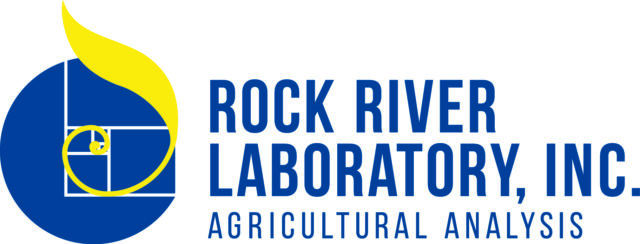This summer’s modest dairy price recovery had many believing global dairy markets had pulled out of a tailspin. After stalling this fall, a brighter outlook is again surfacing among dairy economists, but milk producers should use available risk management tools to protect against another downturn, according to Alan Zepp, risk management program manager at Pennsylvania's Center for Dairy Excellence (CDE).
“The price recovery we saw this summer in U.S. dairy markets was the result of production slowdowns in the rest of the world,” Zepp said during his monthly “Protecting Your Profits” conference call. “U.S. fundamentals – including the U.S. dairy herd and cheese and butter inventories – are all weighing on the market today, pulling Class III prices down to last spring’s levels.”
”There are several optimistic price outlooks being presented by dairy economists, but some of them essentially ignore the large inventories of dairy products in Europe,” Zepp said. “I hope they are right, but I don’t see how milk prices can recover quickly until these inventories drop off some.”
A world economic crisis or event could cause dairy prices to go lower. Less likely, Zepp said, feed costs could rise higher than anticipated.
Risk management options
Zepp provided a dairy market update and discussed risk management options during his monthly call. The program, recorded and available on the Center for Dairy Excellence website, provided an update on the Margin Protection Program for Dairy (MPP-Dairy), Livestock Gross Margin-Dairy (LGM-Dairy) and puts and options on the Chicago Mercantile Exchange (CME) futures market.
MPP-Dairy
The July-August MPP-Dairy margin was $8.42 per hundredweight (cwt). The September MPP-Dairy margin, the first half of the September-October pay period, won’t be announced by USDA until Oct. 31.
Using current futures prices, Zepp projected margins for upcoming pay periods at: September-October – $ 9.27 per cwt; November-December – $9.08 per cwt; $9.31 per cwt for the first six months of 2017; and $10.08 per cwt for the second half of 2017.
Based on those preliminary estimates, there would be no MPP-Dairy indemnity payments through next year.
Zepp noted that both 2014 and 2016 futures prices missed the mark on MPP-Dairy margin predictions.
“Futures markets are the best indicator of anticipated margin we have, but they aren’t absolute,” Zepp said.
LGM-Dairy
Under LGM-Dairy, producers can insure milk income over feed cost margins for a 10-month period. The Oct. 28-29 sales period offers coverage for December 2016 through September 2017, with policies available through certified crop insurance companies.
Based on conditions as of Oct. 26, the insurable 10-month LGM-Dairy margin averaged $7.93 per cwt, down from last month’s average of $8.47 per cwt.
As of Oct. 26, the cost of a zero deductible policy for the 10-month period was 53 cents per cwt, with a $1 deductible policy costing about 13 cents per cwt.
Conditions can change, and USDA extended the 2017 enrollment period to allow dairy producers time to see how the milk price/feed cost margin outlook develops before they make coverage decisions. The deadline to enroll in the 2017 MPP-Dairy program is Dec. 16 at USDA FSA offices.
A reminder: By law, producers already enrolled in MPP-Dairy can’t participate in LGM-Dairy.
CME Class III puts/options
In comparison, as of Oct. 26, a March Class III $15.75 per cwt “put” was trading at 59 cents per cwt, with a $14.75 put (similar to a $1 deductible LGM-Dairy policy) costing 22 cents per cwt.
Read also Blog: LGM-Dairy’s performance outshines MPP this year
Market fundamentals
Zepp offered the following market fundamentals:
• The national dairy herd appears to have leveled off at 9.338 million cows in September, down from 9.341 million in August.
• Butter stocks remain 66 percent more than the three-year average, and are the highest September level since 1993.
• Domestic cheese stocks are at an all-time high for a September, but only 12 percent more than the three-year average.
• Class III futures prices average $15.73 per cwt for the next 12 months, $2 less than the five-year average and 40 cents less than a month ago.
• European and international cheddar cheese and butter prices have increased to a level 25 cents to 30 cents above Chicago Mercantile Exchange (CME) prices, even when corrected for the stronger dollar. CME butter prices fell slightly over the past three months, and CME barrel cheese and other international prices are very similar when converted to U.S. dollars.
• International and U.S. milk powder prices are trading at least 20 percent below their three-year averages. U.S. nonfat dry milk prices are currently 10 cents per pound under Oceania’s average price when converted to U.S. dollars, making U.S. milk powder products competitive internationally, even with the strong dollar.
• Among the top five global milk exporters, the only country/region producing more milk than a year ago is the U.S.
Find Zepp’s archived Protecting Your Profits podcast on the Center for Dairy Excellence website. Next month’s call is scheduled for Nov. 16, with the next LGM-Dairy policy sales period set for Nov. 25-26. ![]()

-
Dave Natzke
- Editor
- Progressive Dairyman
- Email Dave Natzke






